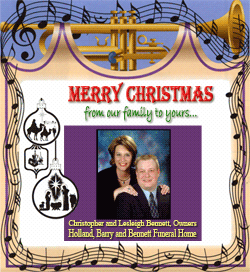|
 Then came the glitch. Then came the glitch.
"Where is the follow spot?" exasperated live transmission
director Jonathan Haswell, monitoring the outgoing feed in a
studio deep in the bowels of the opera house, grumbled to his
small crew hunched over vision mixers and a "Parsifal" score.
Spotlights above the stage had failed to come on instantly to
track New Zealand-born tenor Simon O'Neill and German soprano
Angela Denoke disengaging from one another.
They flicked on within seconds and it is unlikely that many in
the Covent Garden audience earlier this month, or in the cinemas
in 28 countries where the Royal Opera screened the transmission,
noticed much, if anything, amiss.
But the incident showed the intensity of the effort behind the
scenes to bring live performances to audiences in cinemas where
the camera reveals intimate details — and snags — invisible even
from the best opera house seats.

It underscored what Peter Gelb, general manager of the
Metropolitan Opera in New York and acknowledged global guru of
live opera broadcasts, has called their "reality show" allure.
"There is this cultural kind of gladiatorial aspect to opera
singing and opera singers because they are out there, they are
singing into (hidden) microphones for the purpose of the
audiences in movie theaters but they are not being amplified,
they are on their own," Gelb, 60, told Reuters in a telephone
interview.
BOX OFFICE
That is one reason more and more people watch live stage
performances. The Royal Ballet's live "Nutcracker" was number
one in the British box office the day of broadcast on December
12.
"You see it on big screens with big emotions and also it's
direct," said Katerina Novikova, head of press for Russia's
Bolshoi Theatre whose ballets reach up to 1,000 cinemas. "It's
quite touching because you see what's going on on our stage."
Live transmissions have become potential or actual big sources
of revenue for the Met, the Bolshoi, the Royal Opera and Ballet,
Britain's National Theatre and others that may only have done
one or two shows but want to do more.
The Met, which spends $1 million per production for live
broadcasts of 10 to 12 operas a year, says it made $17 million
from them in its 2013 fiscal year. To emphasize the "liveness",
the Met even shows the scenery changes in its broadcasts to be
seen this year by about three million people in 64 countries.
"We're not censoring the action and things happen which are fun
for the audiences. The audience knows it's all kind of live and
spontaneous," Gelb said.
That is a selling point for people who trek to the Barbican
Cinema in London to watch "Met Live" from New York, sipping wine
and eating smoked salmon sandwiches with friends in the lobby
during the interval, or who fill up a theater in Budapest for a
transmission of Shakespeare's "Othello" or Kenneth Branagh in
"Macbeth" presented by Britain's National Theatre.

"It's about being part of the larger audience and also that it's
happening right there and now," said Michael Mansell, 54, a
British translator who regularly attends the National Theatre
broadcasts in the Hungarian capital. He likes the quality of
acting and the live theater experience — even from a distance.
"You don't want things to go wrong but things could go wrong.
There's the feeling it's happening in front of you, it's not
happened before, it's different from a film," he said.
WARTS AND ALL
Things go wrong even for the Met, which has the benefit of years
of experience, having made its first live transmission on
December 30, 2006. A 10-to-15 second transmission blackout at
the Barbican in Verdi's "Falstaff" this month had the audience
holding its breath. Gelb is said to track sunspot activity for
advance warning of possible satellite transmission disruptions.
[to top of second column] |

But while the high-gloss, high-cost world of opera may want its
broadcasts to be as close as possible to perfection, David Sabel,
the Washington, D.C.-born head of digital broadcast for Britain's
National Theatre, doesn't have any qualms about spittle issuing from
an actor's mouth.
"It's sort of warts and all — this is the theater," Sabel, 34, told
Reuters in an interview.
"If you're in the front row in the theater you do sometimes get spat
on and I think people love that. I think audiences in cinemas, they
want it to be like they are there. They can't be in London or they
couldn't get a ticket to the show, so isn't it great they can get an
opportunity like this?"
If the Met, under Gelb, is now the biggest brand in the live opera
world, the National Theatre, whose outgoing artistic director
Nicholas Hytner hired the fresh-out-of-business-school Sabel to
write a business plan for live theater transmissions, and then to
manage it, is coming up fast.
LEAPFROG GROWTH
It was the Met's leapfrog growth that inspired the National to
look into live broadcasts in 2008, Sabel said. Since then the number
of cinemas showing broadcasts from the National's stage, and from
other theaters that have signed on board, has doubled every year. A
transmission of the popular "War Horse" in February is expected to
be shown on 1,000 screens, he said.
"It's growing really quickly and luckily it has been a huge success
artistically and with audiences," Sabel said. "We find that some
people are skeptical the first time because you think filmed theater
hasn't worked in the past, but we've found a way to do it that
works."
What the National does, but the Met and Royal Opera
do not, is to take over the best seats for its cameras, effectively
turning the theater into a studio for a night, and charging the
theater clientele a bit less per ticket for the inconvenience.

At a cost of about 250,000 pounds ($410,000) per transmission, the
National makes a small profit and fulfils its mission of bringing
theater to people throughout Britain, and now the world, Sabel said.
The opera productions, on the other hand, are made with the utmost
decorum. The live transmissions are choreographed and scripted down
to the last detail. The cameras, while visible inside the opera
house, are placed so as not to ruffle the feathers of people
spending sometimes $300 a ticket — perhaps ten times what it might
cost to attend a cinema screening.
Haswell, 53, who worked as a director for the BBC before going
freelance, said enormous advances in high-definition digital cameras
and sound capture and editing have made a lot of the magic possible,
but preparation is everything.
He pores over DVD recordings of rehearsals, and the
score of the opera, to come up with a shot list for his camera
crews. With the blessing of stage director Stephen Langridge, he
consults the singers about subtle changes in their movements or
position on stage to provide better camera shots at specific moments
— especially for that kiss.
"Parsifal, when you come down stage left to Kundry, please be within
arm's length so you don't have to move your feet," Haswell said he
had told tenor O'Neill.
"The reason is I have a tight two-shot here with the two of them in
frame and if he steps away the camera has to ease out and you lose
that intimacy. It feels like there's some kind of mistake and when
it's on a cinema screen that zooming out feels just awful."
O'Neill and Denoke did as instructed. The shot was precisely framed.
And the spotlights provided a reminder that this was what it said on
the label: Royal Opera live.
($1 = 0.6101 British pounds)
(Editing by Giles Elgood)
[© 2013 Thomson Reuters. All rights
reserved.] Copyright 2013 Reuters. All rights reserved. This material may not be published,
broadcast, rewritten or redistributed. |